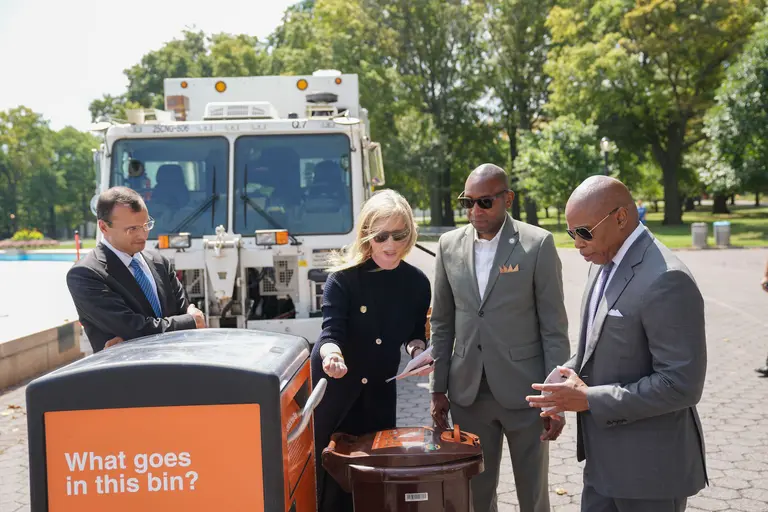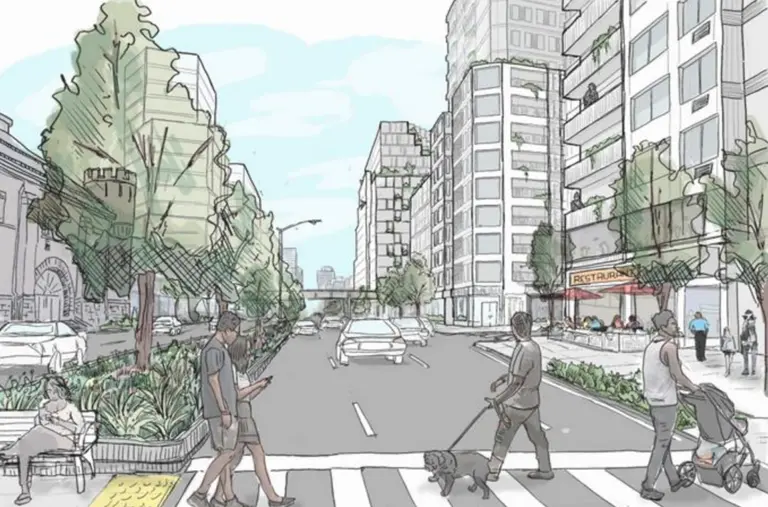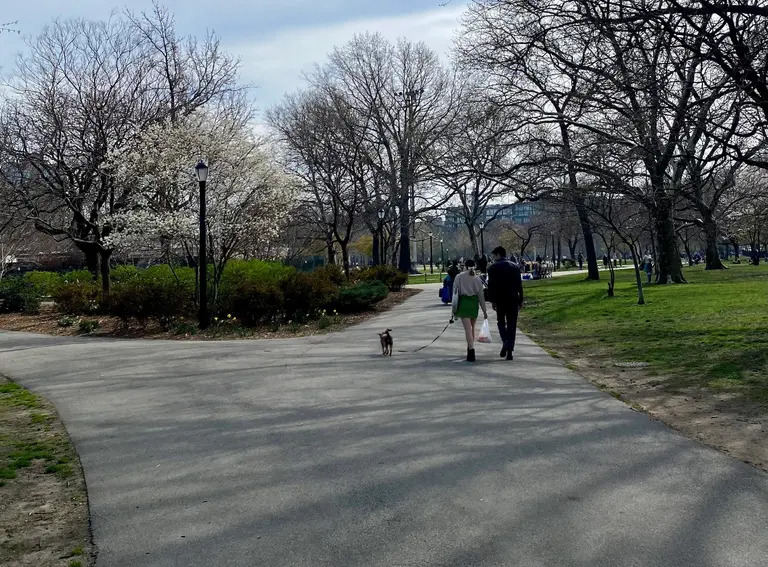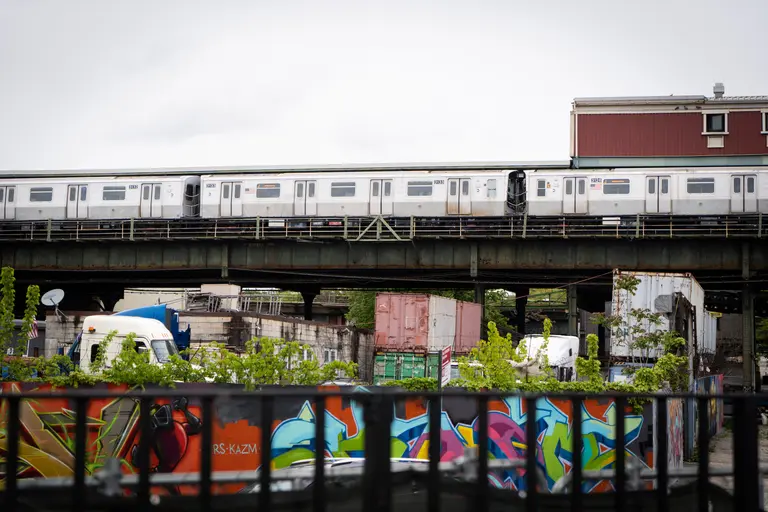Feds approve asylum seeker shelter at Brooklyn’s Floyd Bennett Field
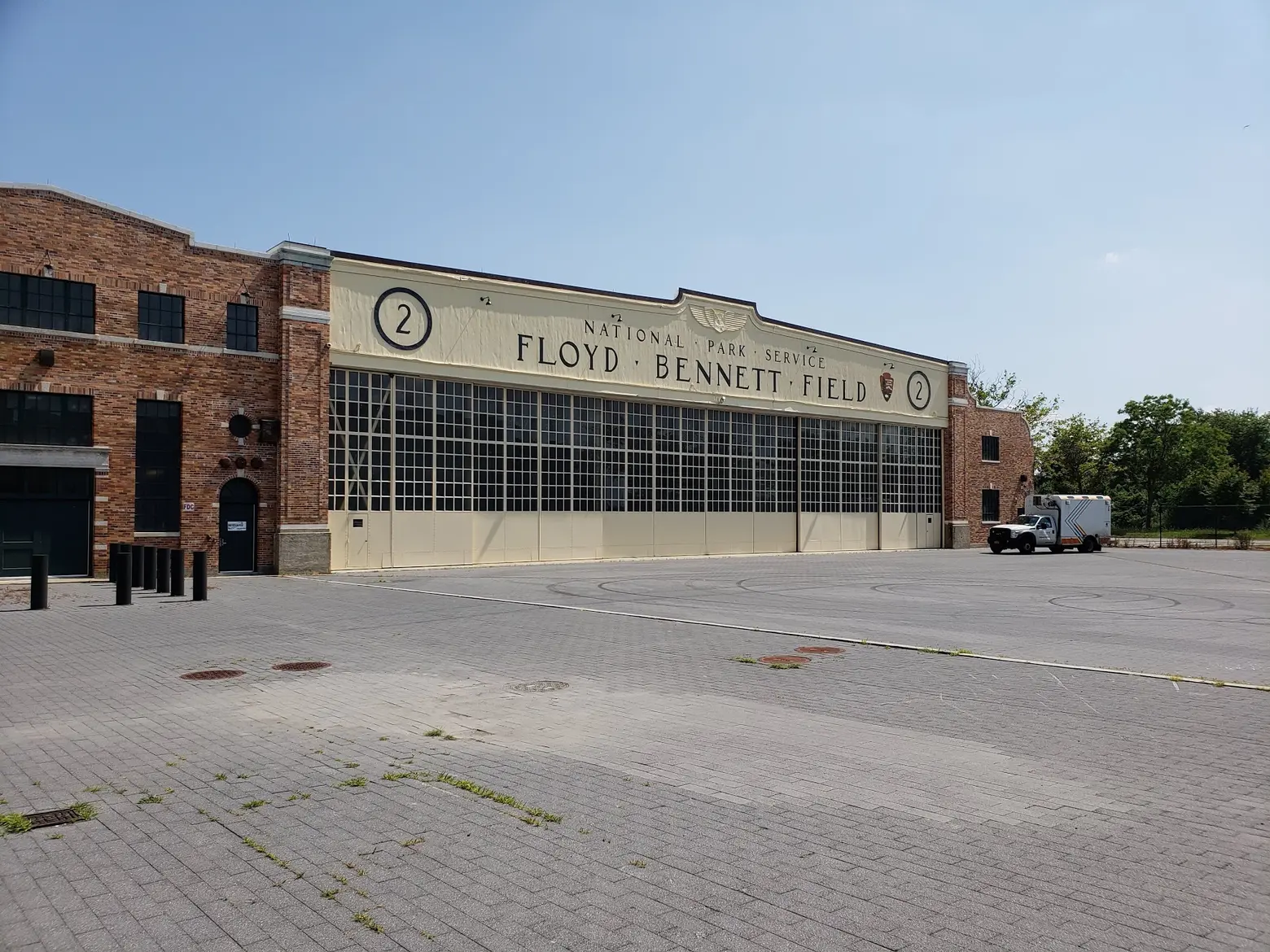
Photo via Wikimedia
Brooklyn’s Floyd Bennett Field will be home to New York City’s latest migrant shelter. Gov. Kathy Hochul on Monday announced a deal was reached for the federal government to provide New York State with a proposed lease of the former naval air station in Marine Park. The governor said the new Humanitarian Emergency Relief and Response Center (HERRC) will be able to house up to 2,000 single adult asylum seekers. While the governor initially requested that the federal government pick up the bill for constructing and staffing the shelter, the state agreed to cover the expenses, according to Gothamist.
The shelter will have space for 2,000 occupants when it first opens, but the state hopes to expand capacity over the coming months. The shelter will be equipped with both air conditioning and heating systems, Hochul said.
“After months of negotiations, the Biden Administration has provided us with a tentative contract that would allow New York to utilize Floyd Bennett Field as a shelter for asylum seekers,” Hochul said in a statement. “Once the final agreement is signed, we will work with Mayor Adams and his team to set up a Humanitarian Emergency Relief and Response Center at Floyd Bennett Field with the capacity to shelter more than 2,000 asylum seekers.”
Hochul first requested the use of the field, which is currently managed by the National Park Service, in May. The state needs to sign the lease and finalize the details before construction can move forward on the new center. New York will not pay rent to the federal government, and the lease proposal makes clear ownership of the land is not being transferred to the state, according to Hochul.
Mayor Eric Adams commended the state for picking up the bill but continued his calls on the federal government to expedite work authorization for asylum seekers.
“For months, Governor Hochul and I have been urging the federal government to allow us to use Floyd Bennett Field to help house some of the more than 100,000 asylum seekers who have sought our care here in New York City, and I’m grateful that we have a tentative agreement to move forward on this site,” the mayor said.
“We will continue to advocate for expedited work authorization for asylum seekers, a federal declaration of emergency, and a national and state decompression strategy, and we’re committed to making today’s announcement the beginning of a new era of enhanced partnership between our local, state, and federal governments.”
Earlier this month, the city opened a new, 2,000-bed migrant shelter on Randall’s Island. The shelter, built on the park’s East River Fields, is the second shelter built on the island, the first of which was constructed last November but shut down after just a month of operation. Shelter occupants moved in last weekend, according to the New York Post.
Last week, asylum seekers moved into a humanitarian relief center set up in the parking lot next to the Creedmoor Psychiatric Center in Queens that will host 1,000 single adult men. The state will reimburse the city for associated costs.
Council Member Mercedes Narcisse, who represents the area of Brooklyn where Floyd Bennett Field is located, told The City she didn’t support the new center opening there because of its inaccessibility.
“Floyd Bennett Field is two-and-a-half miles from the nearest grocery store, over three miles from the nearest public school, and five-and-a-half miles from the closest hospital,” Narcisse told The City. “Furthermore, as I have stated previously, any proposal to house individuals at this location, where infrastructure — such as adequate plumbing, heating, and cooling — is lacking, is one I cannot endorse.”
Nearly two weeks ago, Adams released an updated table of the current and estimated costs of the city’s migrant crisis. During the fiscal year 2023, the city spent $1.45 billion, with a projected cost of $3.58 billion by 2024 if the shelter population stays the same. Without continued support from the state and federal governments and based on current trends, the city could spend more than $12 billion over the next three fiscal years.
RELATED:












